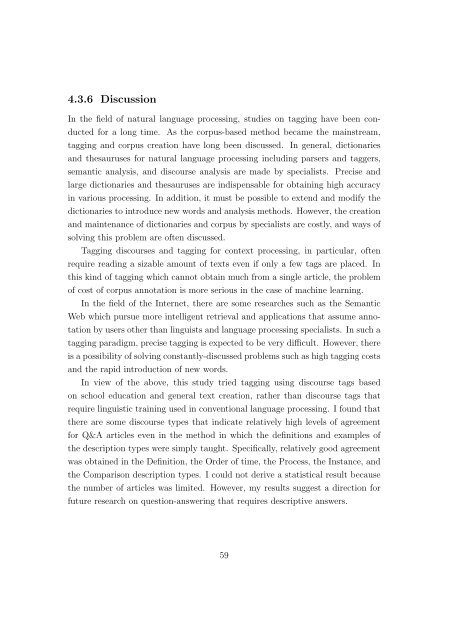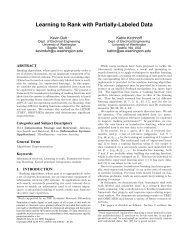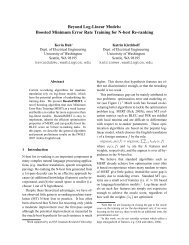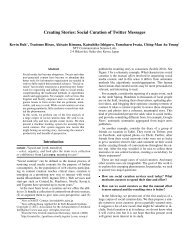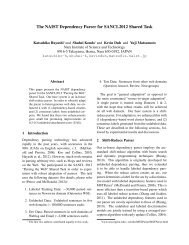file - ChaSen - 奈良先端科学技術大学院大学
file - ChaSen - 奈良先端科学技術大学院大学
file - ChaSen - 奈良先端科学技術大学院大学
- No tags were found...
Create successful ePaper yourself
Turn your PDF publications into a flip-book with our unique Google optimized e-Paper software.
4.3.6 DiscussionIn the field of natural language processing, studies on tagging have been conductedfor a long time. As the corpus-based method became the mainstream,tagging and corpus creation have long been discussed. In general, dictionariesand thesauruses for natural language processing including parsers and taggers,semantic analysis, and discourse analysis are made by specialists. Precise andlarge dictionaries and thesauruses are indispensable for obtaining high accuracyin various processing. In addition, it must be possible to extend and modify thedictionaries to introduce new words and analysis methods. However, the creationand maintenance of dictionaries and corpus by specialists are costly, and ways ofsolving this problem are often discussed.Tagging discourses and tagging for context processing, in particular, oftenrequire reading a sizable amount of texts even if only a few tags are placed. Inthis kind of tagging which cannot obtain much from a single article, the problemof cost of corpus annotation is more serious in the case of machine learning.In the field of the Internet, there are some researches such as the SemanticWeb which pursue more intelligent retrieval and applications that assume annotationby users other than linguists and language processing specialists. In such atagging paradigm, precise tagging is expected to be very difficult. However, thereis a possibility of solving constantly-discussed problems such as high tagging costsand the rapid introduction of new words.In view of the above, this study tried tagging using discourse tags basedon school education and general text creation, rather than discourse tags thatrequire linguistic training used in conventional language processing. I found thatthere are some discourse types that indicate relatively high levels of agreementfor Q&A articles even in the method in which the definitions and examples ofthe description types were simply taught. Specifically, relatively good agreementwas obtained in the Definition, the Order of time, the Process, the Instance, andthe Comparison description types. I could not derive a statistical result becausethe number of articles was limited. However, my results suggest a direction forfuture research on question-answering that requires descriptive answers.59


